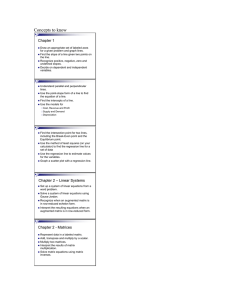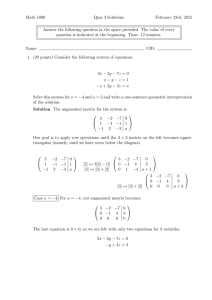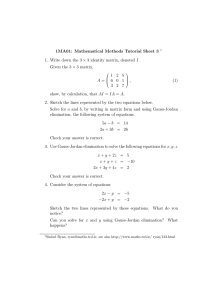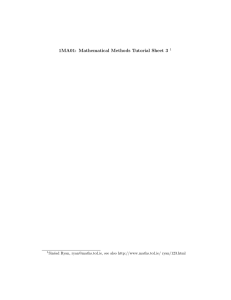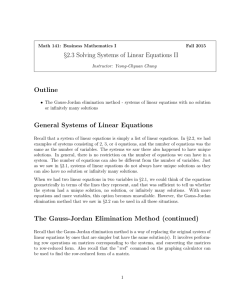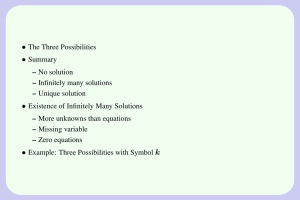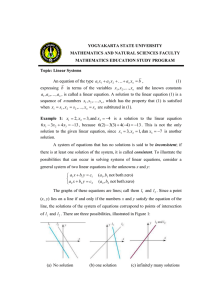Math 141 WIR2_Dr. Rosanna Pearlstein 1.Q, 2.1, 2.2 1.
advertisement
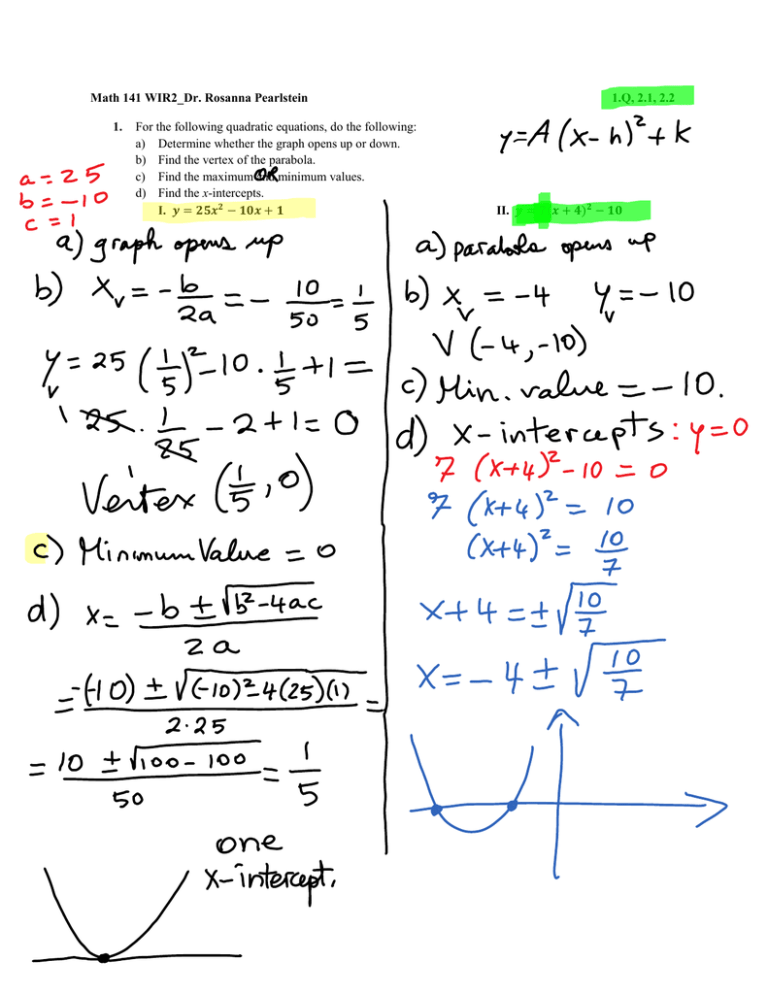
Math 141 WIR2_Dr. Rosanna Pearlstein
1.
For the following quadratic equations, do the following:
a) Determine whether the graph opens up or down.
b) Find the vertex of the parabola.
c) Find the maximum and minimum values.
d) Find the x-intercepts.
I.
1.Q, 2.1, 2.2
II.
2.
If the demand of an item is given by
(where x is the number of items) find the revenue
function.
a) What number of items produced yields maximum revenue?
b) If the cost is
, find the equilibrium point.
3.
For each linear system below, use the Gauss-Jordan elimination method to determine the solution(s) or lack
thereof.
A.
B.
C.
{
{
{
4.
(From our textbook, Finite Mathematics by Tan, 2.1 #28). Box Office Receipts. A theater has a seating
capacity of 900 and charges $4 for children, $6 for students, and $8 for adults. At a certain screening with
full attendance, there were half as many adults as children and students combined. The receipts totaled
$5600. How many children attended the show?
5.
Which of the following matrices is in row-reduced form?
A.
B.
[
| ]
C.
[
|
]
[
|
]
6.
Pivot each of the two matrices below about the boxed element.
A.
B.
[
| ]
[
|
]
7.
Solve the linear systems below, using the Gauss-Jordan elimination method.
{
{
8.
Solve the linear systems below. Express the solutions using parameters.
I.
II.
{
{
9.
Determine the value of k for which systems A and B below have infinitely many solutions and no solution
respectively.
A.
B.
{
{
10. Comment on the following statements: are they true or false? Why?
(a) A linear system with the same number of equations as unknowns always has a solution.
(b)
A linear system with more equations than the number of unknowns never has a solution.
(c)
A (2×2) linear system of two lines in the plane will have a solution if the two lines are not parallel.
(d)
A (3×3) linear system of three planes in space will have a solution if the three planes are not parallel.
(e)
A linear system with more variables than equations always has a solution.
(f)
A linear system with more variables than equations either has no solution or it has infinitely many
solutions.
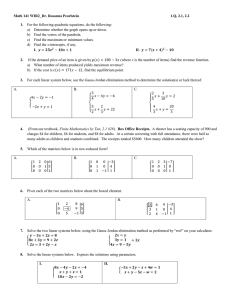
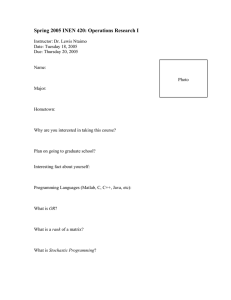
![1S2 (Timoney) Tutorial sheet 7 [January 7 – 11, 2008] Name: Solutions](http://s2.studylib.net/store/data/011011721_1-38e811b59e0f58e61108a5c182009186-300x300.png)
